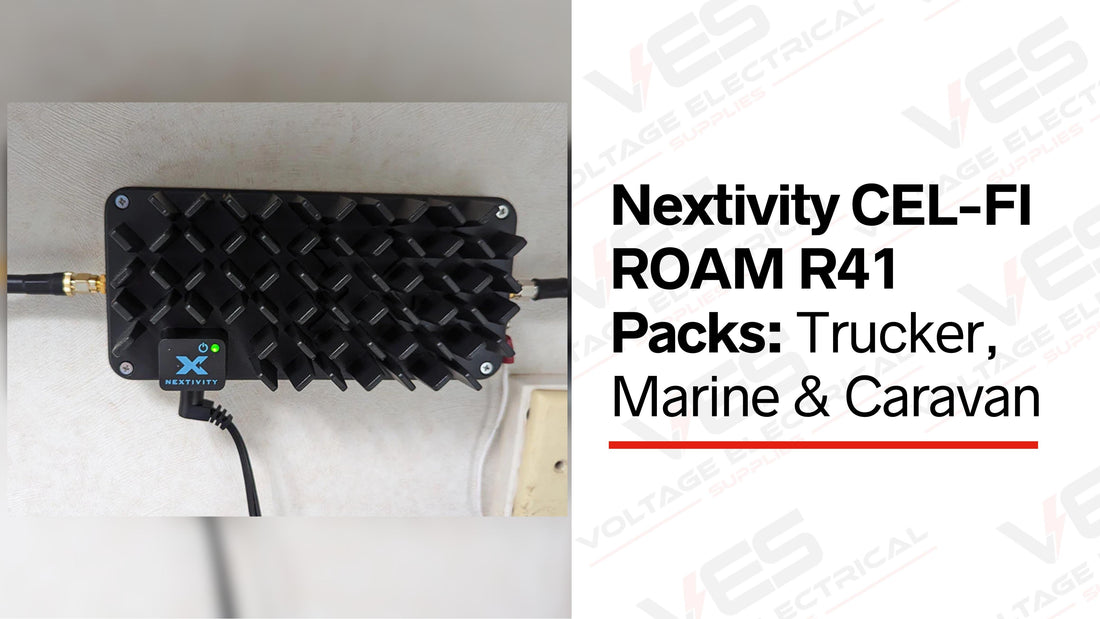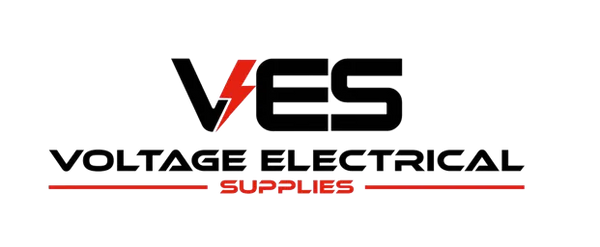
Nextivity CEL-FI ROAM R41 Packs: Trucker, Marine & Caravan
Share
Stuck in a mobile “no signal” zone while driving your truck, sailing, or towing your caravan? The Nextivity CEL-FI ROAM R41 range offers a set of smart solutions to keep you connected — whether you’re on the highway, offshore, or camping deep in the bush.
In this post, we’ll cover what the ROAM R41 packs are, how they differ (Trucker, Marine, Caravan), why you might need one, and how to pick the best pack for your situation.
What is the CEL-FI ROAM R41?
In simple terms:
- It’s a signal booster / mobile repeater designed for vehicles (trucks, caravans, boats) to improve 3G, 4G, and 5G DSS mobile coverage.
- Works with major Australian carriers (Telstra, Optus, Vodafone).
- Plug-and-play: meant to be relatively easy to install.
- Uses Nextivity’s IntelliBoost chip (4th generation) for better signal gain, reliability and performance.
If you lose bars inside your truck cabin, in remote marine areas, or your caravan gets spotty signal, this device helps “boost” what signal is there so your phone or mobile devices can work better.
Why it Matters: Use Cases & Benefits
Here are concrete situations where a ROAM R41 makes a difference:
| Situation | Problem Without Booster | What ROAM R41 Adds |
|---|---|---|
| Long haul trucking in remote areas | Weak or no signal → missed calls, navigation delays, safety issues (emergency contact etc.) | More stable connection, better GPS, safer communication |
| Boating / marine use | Signal drops or interference when offshore or near coasts, weather-exposed installations | The marine pack is built for water exposure, better antenna mounts, more stable reception |
| Caravan & RV camping | Often in rural or forested zones; signal blocked by body of caravan, trees, terrain | A properly placed external antenna + repeater inside can keep you connected for entertainment, work, or safety |
Quick Comparison of Trucker, Marine, Caravan
Here are key differences among some of the ROAM R41 packs you’re exploring from Voltage Electrical Supplies.
| Pack | Antenna / Mount Type | Best Use Case | Pros | Cons / Limitations |
|---|---|---|---|---|
| Trucker Compact Black Pack | Compact Blackhawk 4G Trucker Edge Compact Antenna (under-seat or low profile) (Voltage Electrical Supplies) | For trucks, 4WDs, vans where you want discreet mounting, minimal wind resistance, inside or under-seat mounting | Rugged frame, good placement options, suited to vehicle environments; supports multiple bands incl. 5G DSS; Telstra/Optus/Vodafone switchable (Voltage Electrical Supplies) | Needs 12V power; might still need good external antenna line-of-sight for optimal performance; cost is non-trivial (~AUD 1,050 for this version) (Voltage Electrical Supplies) |
| Marine Pack (with adhesive mount) | Marine-grade external antennas & adhesive or mount built for exposure to elements | Boats, marine environments where salt, water, harsher weather & maybe less rigid mounting options | Better durability in harsh environment, suitable external antenna placement; helps with signal over open water; designed for marine mounting | Might cost more; external parts need correct mounting; power/source challenges on some boats; maintenance considerations (salt, corrosion) |
| Caravan Wideband / LPDA Pack (with ceiling dome) | Wideband antenna, LPDA, ceiling-dome mount (often inside ceiling of caravan) | For caravans or motorhomes where installation inside or through roof/ceiling gives better signal penetration; more aesthetic, less external protrusion | Good external coverage + internal spread; often cleaner look; better antenna design for directional/signal catch; ideal for remote camping zones | More complex install; potential cost; must ensure antenna placement is optimal (height, line-of-sight); might need professional installation depending on roof type; possible higher drag/rigidity where mounted outside |
Things to Consider Before Buying
To make sure you get good value, think through:
-
Carrier & Frequency Compatibility
Make sure the pack supports the frequency bands your mobile carrier uses. In Australia, that includes 700, 850, 900, 1800, 2100, 2600 MHz. Also check for 5G DSS coverage if you want to use 5G when available. The ROAM R41 supports these. -
Power Source
Most packs need 12V auxiliary power (from vehicle battery, a caravan battery, or marine power). Be sure you have a stable source. -
Antenna Placement & Mounting
External antenna needs as clear line to cell towers as possible. Objects, metal, height, and orientation matter. An LPDA or dome mount through ceiling often helps caravans. On boats, mounting height and avoiding obstructions (like masts, metal tents) is key. -
Weather & Durability
Marine environments are harsher: salt, moisture, movement. If using ROAM R41 on a boat, ensure the pack/components are marine-rated or sealed. -
Budget & Return on Investment
These devices are not cheap. Estimate what benefit you’ll get (less dropped calls, safer travel, maybe ability to use mobile internet reliably). If you rely heavily on connectivity (for navigation, safety, business, or streaming), this may pay off faster.
Key Takeaway
The Nextivity CEL-FI ROAM R41 is one of the best investments for anyone seeking reliable mobile coverage beyond city limits. Truck drivers can stay connected and navigate safely, marine users benefit from stronger reception even offshore, and caravan owners can enjoy streaming, working, or making emergency calls while camping in remote locations.
No matter where your journey takes you, the right ROAM R41 pack ensures you remain connected, safe, and ready to enjoy the ride.
